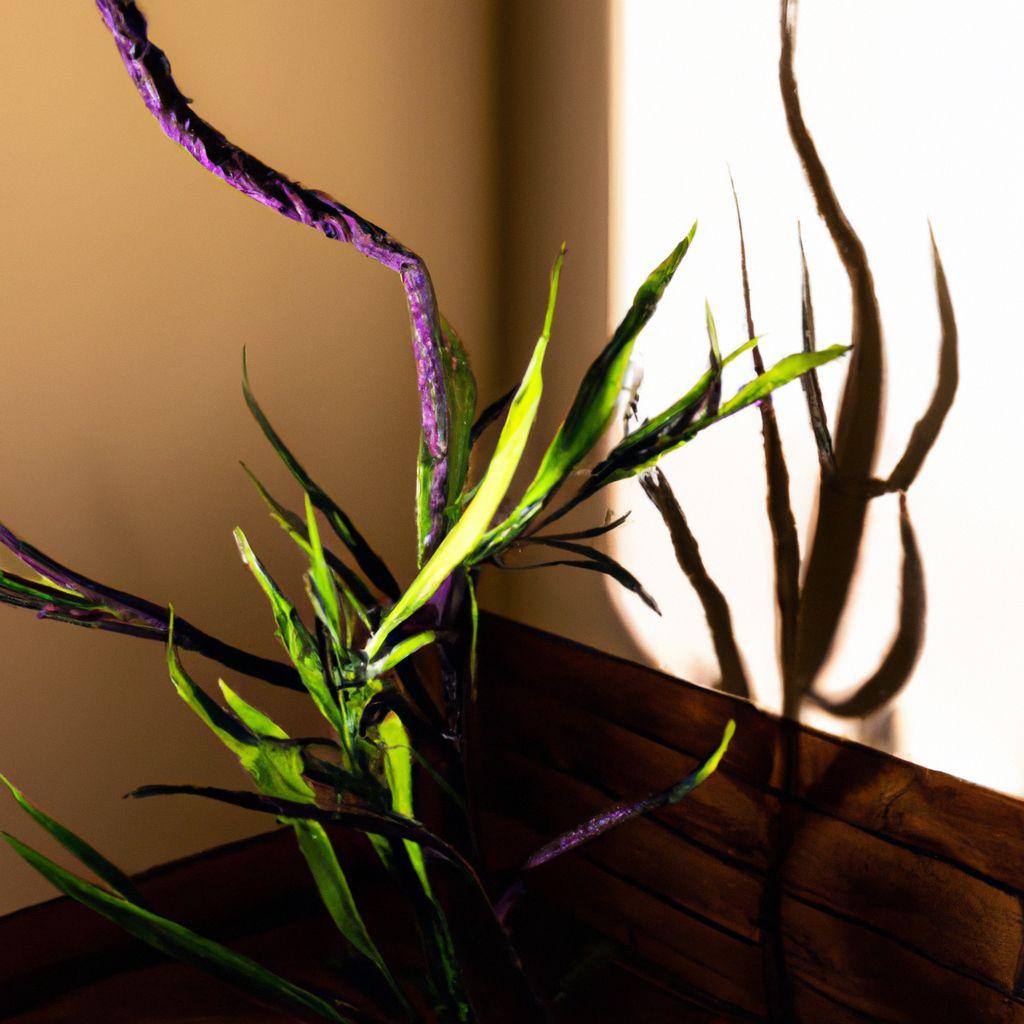Key Takeaway:
- The Dragon Tail Plant, known for its unique features, is a fascinating addition to any garden or indoor space.
- Proper care is essential for the Dragon Tail Plant’s growth: it requires ample light, well-draining soil, and regular watering to thrive.
- Propagation of the Dragon Tail Plant can be achieved through stem cuttings, while regular pruning and repotting are crucial for maintaining the plant’s health and shape.
Introduction to the Dragon Tail Plant
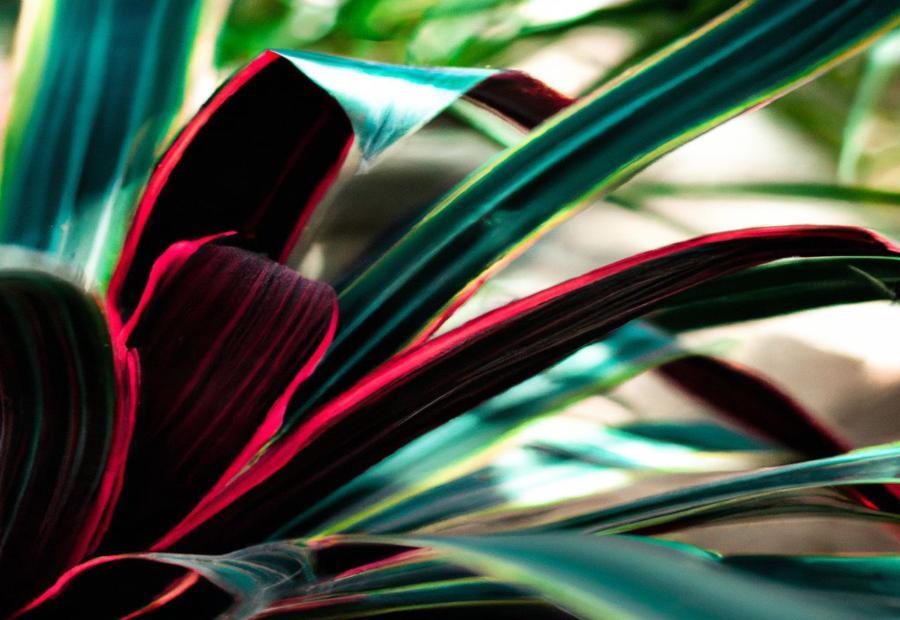
Photo Credits: Gardeninggurus.Org by John Jones
The Dragon Tail Plant, known for its unique features, is a fascinating specimen found in various native habitats. In this brief introduction, we will explore the description and distinctive characteristics of the Dragon Tail Plant, as well as delve into its natural habitats. Get ready to uncover the intriguing world of this captivating botanical wonder.
Description of the Dragon Tail Plant and its unique features
Discover why the Dragon Tail Plant (Epipremnum pinnatum) captivates with its unique features! Its leaves are shaped like a dragon’s tail with a glossy texture, varying in color from vibrant green to deep shades of dark green.
Astonishingly, the plant produces long runners or vines that can reach several feet in length. It climbs trees using aerial roots and is valued for purifying air quality. Variegated leaf variations can also appear with patterns or streaks of contrasting colors. Non-variegated leaves provide an elegant simplicity.
Handle with care, however, as the plant’s sap contains calcium oxalate crystals that can cause skin irritation and gastrointestinal discomfort if ingested.
The scientific name “Epipremnum pinnatum” originates from Greek and Latin origins: “epi” meaning upon or attached to, “premnon” meaning a stump or trunk, and “pinnatum” referring to the pinnate (feather-like) nature of the plant’s leaves.
It thrives in the tropical regions of Southeast Asia, making dragons jealous. Uncover the wild origins of this interesting species!
Native habitats of the Dragon Tail Plant
The Dragon Tail Plant is known scientifically as Epipremnum pinnatum. It’s native to the tropical rainforests of Southeast Asia like Malaysia, Indonesia, and Thailand. It loves the canopy of trees, as it gets filtered or dappled sunlight. This protects it from direct exposure to intense sunlight, while still getting enough light for photosynthesis.
Dragon Tail Plants like humid environments and regular rainfall. But they must have well-draining soil that retains moisture without becoming waterlogged. These habitats have high humidity levels because of the bodies of water and dense vegetation.
One special feature of this plant is its ability to grow as a creep or climber. This means it can adapt to different surfaces and grow up or along the ground. This special talent lets the Dragon Tail Plant thrive in its native habitats.
If you want to make sure your Dragon Tail Plant stays healthy and alive, try to replicate its natural environment. It’s like having a pet dragon, without all the fire-breathing and destruction.
Growing and Care Instructions for the Dragon Tail Plant
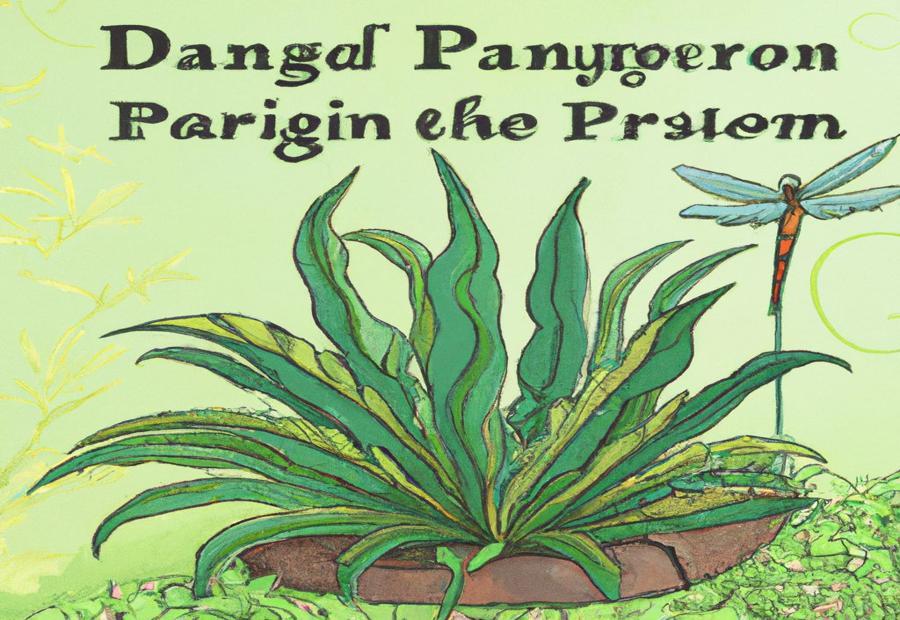
Photo Credits: Gardeninggurus.Org by Terry Thompson
Discover the secrets to successfully growing and caring for the Dragon Tail Plant. Uncover the ideal light requirements and positioning, learn about optimal watering and soil conditions, and understand the temperature and humidity preferences of this magnificent plant. Get ready to transform your space into a lush oasis with these expert tips and tricks.
Light requirements and ideal positioning for the plant
The Dragon Tail Plant needs special light and placement for full growth. It loves bright, indirect light and can tolerate some shade. Indoors, place it by a north or east-facing window. For outdoor cultivation, pick a spot with partial shade to shield it from strong light. In places with high light intensity, give it more shade. Change the plant’s position to ensure even growth and symmetrical shape. Water it sparingly to maintain its health and vitality.
Optimal watering and soil conditions
The Dragon Tail Plant needs special care! Watering is key. Make sure the soil is moist, but not waterlogged. Too much water can lead to root rot and other diseases. The best soil mix is peat moss, perlite, and coarse sand. This helps with aeration and prevents water from pooling in the roots.
The plant needs slightly acidic to neutral soil. A pH range between 5.5 and 7.0 encourages proper nutrient absorption and strong root growth. Adding organic matter to the soil, like compost or aged manure, makes it more fertile and helps keep it moist.
Mulch around the base of the plant will protect it from weeds and help keep the soil moist. This helps the Dragon Tail Plant stay healthy and vibrant.
Pro Tip: Before watering, check the moisture level of the soil by sticking your finger about an inch deep. If it’s dry, water your Dragon Tail Plant. Adjust the watering routine to fit the plant’s needs for optimal growth.
Temperature and humidity preferences for the Dragon Tail Plant
Temperature and humidity are must-haves for the Dragon Tail Plant’s growth and well-being. It has specific needs for these environmental conditions.
Let’s check out the table to discover its preferences:
| Temperature | Humidity |
|---|---|
| 65-85°F (18-29°C) | Moderate to high |
The Dragon Tail Plant loves temperatures between 65-85°F (18-29°C). And it likes moderate to high humidity levels, like its native tropical habitats.
It can tolerate lower temperatures better than other tropical plants. So, it’s fit for many climates.
Did you know? According to ‘The Dragon Tail Plant’ article, it’s toxic if consumed, but only in large quantities.
Propagation and Maintenance of the Dragon Tail Plant
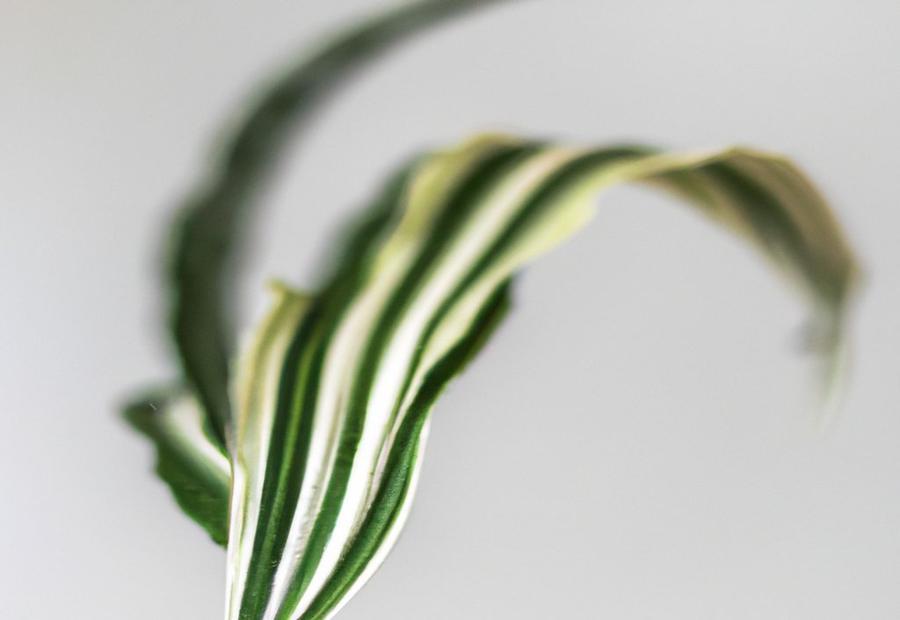
Photo Credits: Gardeninggurus.Org by Jordan Hall
The Propagation and Maintenance of the Dragon Tail Plant cover crucial aspects of this fascinating plant. From methods of propagating the plant through stem cuttings to essential pruning and repotting guidelines, this section provides valuable insights on how to propagate and care for the Dragon Tail Plant, ensuring its health and shape.
Methods of propagating the Dragon Tail Plant through stem cuttings
To propagate the Dragon Tail Plant through stem cuttings is popular. It lets you reproduce this plant and increase your collection without buying new ones.
To do this, follow these steps:
- Take a healthy cutting. Get one with at least two nodes, which are needed for root development.
- Cut it cleanly just below a node.
- Remove leaves and branches from the lower part, but keep some at the top.
- Dip the cutting’s bottom in rooting hormone powder.
- Put it in a well-draining potting mix or propagation media, standing upright.
- Keep the soil moist and put the container in a warm spot with bright indirect light.
- Check on the cutting regularly and mist it with water.
- In 4-6 weeks, you should see new roots forming.
- Once roots have grown substantially, transplant the rooted cutting to its own pot with regular potting soil.
Propagating through stem cuttings is a simple and cost-effective way to expand your Dragon Tail Plant collection.
Pruning and repotting guidelines for maintaining the plant’s health and shape
Take care of the Dragon Tail Plant for it to thrive! Pruning helps keep it in shape and promote growth. Cut off any dead or yellowing leaves with clean pruning shears. Trim back any long or leggy stems, just above a leaf node. Repot it into a bigger pot so the roots can spread and obtain enough nutrients. Use a well-draining potting mix with organic matter for proper water flow and nutrient absorption. Avoid repotting when the plant is growing actively, wait until it enters a period of dormancy.
Plus, its leaves have the unique dragon tail shape! It is native to tropical regions with high humidity such as Southeast Asia. So, keep in mind the humidity levels when caring for it.
Pro Tip: Sanitize your pruning tools before and after use, to prevent any diseases or pests!
Common Pests, Diseases, and Potential Health Concerns with the Dragon Tail Plant
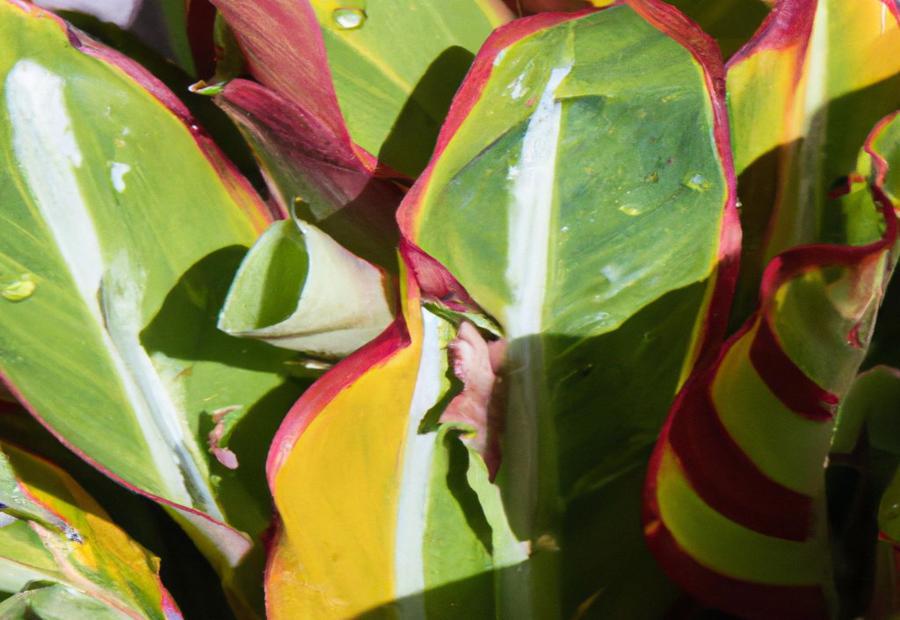
Photo Credits: Gardeninggurus.Org by Vincent Thompson
The Dragon Tail Plant is not without its share of challenges. Discover how to identify and treat common pests, prevent and manage diseases, and learn about safety precautions concerning the plant’s toxicity to humans and pets. Stay informed on the potential health concerns associated with this fascinating plant in our comprehensive guide.
Identification and treatment of common pests that affect the plant
The Dragon Tail Plant can be vulnerable to pests, which can harm its health and looks. It is important to spot and treat these pests.
Spider mites leave webbing on the leaves. Wipe with a damp cloth and use natural pesticide to deal with them.
Mealybugs give a white, cottony appearance to stems and foliage. Take them off with alcohol-soaked cotton swabs or water and mild dish soap.
Scale insects attach to leaves and stems. Remove with a soft brush or horticultural oil sprays.
Aphids live on new growth and come in many colors. Use insecticidal soaps or strong water spray to get rid of them.
Check for signs of pest activity – discolored leaves, stunted growth, wilting. Treat as soon as possible to prevent damage. Keep the area around the plant clean and remove dead leaves and debris.
Find resources for houseplant care online. They provide instructions and remedies for pest management.
Tackle pests quickly as they can spread among indoor plants. Provide proper light, watering, and humidity levels. Inspect the plant regularly and take immediate action.
Follow these tips to keep your Dragon Tail Plant healthy – better than your last Tinder date.
Prevention and management of diseases that can impact the Dragon Tail Plant
To keep the Dragon Tail Plant healthy, prevention and management of diseases are essential. Offer proper care and make an ideal environment. Avoid over-watering and ensure good drainage to avoid root rot. Regularly inspect the plant for any signs of disease or pests.
Address any issues that arise promptly. Fungal infections like leaf spot and root rot can impact this plant. Remove affected leaves to manage leaf spot. With root rot, address drainage problems and adjust watering practices.
Monitor for pests like mealybugs, spider mites, and scale insects. If detected, use natural insecticidal soap or introduce beneficial insects.
Create a healthy growing environment for the Dragon Tail Plant. Maintain adequate light, temperature, and humidity levels.
These prevention and management techniques reduce the risk of diseases impacting the Dragon Tail Plant. This ensures its long-term health and vitality.
Safety precautions and potential health risks associated with the plant’s toxicity to humans and pets
Introducing the Dragon Tail Plant, or Epipremnum pinnatum ‘Cebu Blue’. It’s quite popular! But, bear in mind its toxicity to humans and pets.
Oxalate crystals can cause irritation. Keep it away from children and pets to avoid any accidental ingestion or contact.
Wear gloves when handling the Dragon Tail Plant. This will protect you from any sap or residue on the leaves that could cause skin irritation and don’t forget to wash your hands afterwards.
Pets should not be allowed to chew on the plant. Ingestion can lead to gastrointestinal issues such as drooling, vomiting, or diarrhea. If you think your pet has eaten any part of the plant, go to the vet right away.
Are you ready to explore the Dragon’s family? Just remember to be safe when caring for your Dragon Tail Plant!
Variations and Similar Species of the Dragon Tail Plant

Photo Credits: Gardeninggurus.Org by Brian Scott
Discover the fascinating world of the Dragon Tail Plant and its various variations and similar species. From the distinctive variegated and non-variegated leaf forms to the intriguing comparisons with plants like Rhaphidophora decursiva and Epipremnum aureum, prepare to be captivated by the unique characteristics and distinctions within this captivating plant family. Hold on tight as we unravel the secrets of these intriguing plants and explore their intricate beauty.
Overview of variegated and non-variegated leaf forms
Text:
Variegation is the different colors or patterns on a plant’s leaves. The Dragon Tail Plant has both variegated and non-variegated leaves. Let’s look at their differences.
Variegated leaves show a mix of green and cream or yellow color. Patterns vary from speckles, spots, stripes, or marbled veining. Variegation makes it attractive as a houseplant.
Non-variegated leaves are solid green. While no striking patterns, they still have the dragon tail shape. They offer a lush, vibrant green look.
Some Dragon Tail Plants may show partial variegation. That adds to the plant’s diversity.
Now consider the specific care for each type. Make sure you pay attention to lighting, watering, and other factors.
Tip: Get both variegated and non-variegated forms. That makes an eye-catching display with contrasting foliage.
Comparison between Dragon Tail Plant and related species like Rhaphidophora decursiva and Epipremnum aureum
The Dragon Tail Plant, Rhaphidophora decursiva, and Epipremnum aureum can be compared with a comparison table. Key features like appearance, leaf shape, and growth habits are listed for each.
The Dragon Tail Plant has glossy dragon tail-like leaves, which adds ornamental appeal to gardens. Rhaphidophora decursiva has large green leaves with veins. Meanwhile, Epipremnum aureum has heart-shaped foliage in a variegated pattern.
These plants are all in the Araceae family. However, they have different care requirements. These include lighting, watering frequency, temperature, and humidity. Knowing these, you can have success growing any of them indoors or out. With the right knowledge and care, you can flex your green thumb and enjoy their beauty.
Cultivation of Dragon Tail Plant Indoors and Outdoors
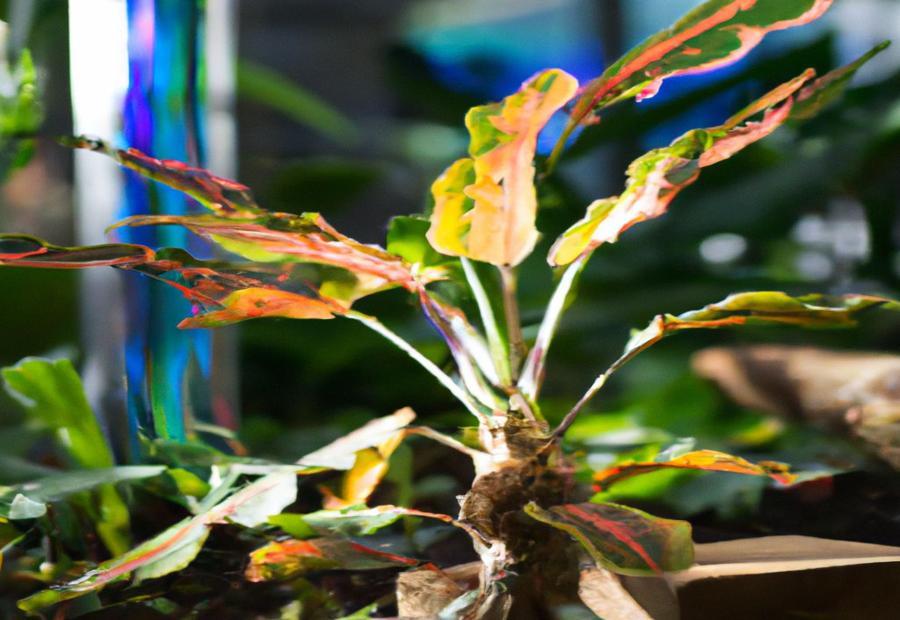
Photo Credits: Gardeninggurus.Org by Philip Davis
Cultivating the Dragon Tail Plant offers a delightful experience both indoors and outdoors. Discover essential tips for successful indoor cultivation and guidelines for growing this unique plant in your outdoor garden. With its striking foliage and low-maintenance nature, the Dragon Tail Plant is a must-have for plant enthusiasts. Let’s explore how to create the perfect conditions for flourishing growth and enjoy the beauty of this remarkable plant in any setting.
Tips for successful cultivation of Dragon Tail Plant indoors
The Dragon Tail Plant is one-of-a-kind and intriguing! To guarantee its thriving growth, here are some tips for successful cultivation indoors:
- Provide the Dragon Tail Plant with bright, indirect light. Keep it away from direct sunlight, as it could burn the leaves.
- Ensure the soil is moist but not soggy. Pick the correct potting mix to let out excess water.
- Maintain a warm, humid atmosphere. The ideal temperature range for the Dragon Tail Plant is 65-85°F (18-29°C). Humidity can be increased with a tray of water or a humidifier.
This plant has some special features that make it stand out from other indoor plants. It has long stems and distinctive arrowhead-shaped leaves. Plus, it’s tolerant of low-light conditions.
With these pointers and knowledge of the Dragon Tail Plant’s unique traits, you can cultivate it indoors with success.
Guidelines for growing Dragon Tail Plant in outdoor gardens
Grow Dragon Tail Plants in outdoor gardens! To be successful, follow these steps:
- Location: Pick a spot that gets partial shade or filtered sunlight. It loves bright, indirect light and can handle some direct sunlight during morning or afternoon hours.
- Soil: Blend well-draining potting soil with coarse sand or perlite. This helps avoid waterlogging and root rot. Dragon Tail Plant loves slightly acidic soil with a pH level of 5.5 to 6.5.
- Watering & Maintenance: Keep soil moist but not wet. Let the top inch of soil dry out before watering again. Make sure to provide airflow around the plant to stop fungal diseases.
- Temperature: Dragon Tail Plant prefers temps between 65°F (18°C) and 85°F (29°C). Protect from frost or freezing weather by bringing indoors or covering with a frost cloth. Also, keep away from strong winds, as it can damage the leaves and stunt growth.
For centuries, Dragon Tail Plants have been grown in outdoor gardens because of their beauty and unique foliage shape – resembling dragon tails. Provide the right conditions and watch it thrive! If you follow the steps from years of horticultural experience, you’ll get to enjoy the stunning presence of Dragon Tail Plants in your garden.
Recommended Products and Resources for Dragon Tail Plant Enthusiasts
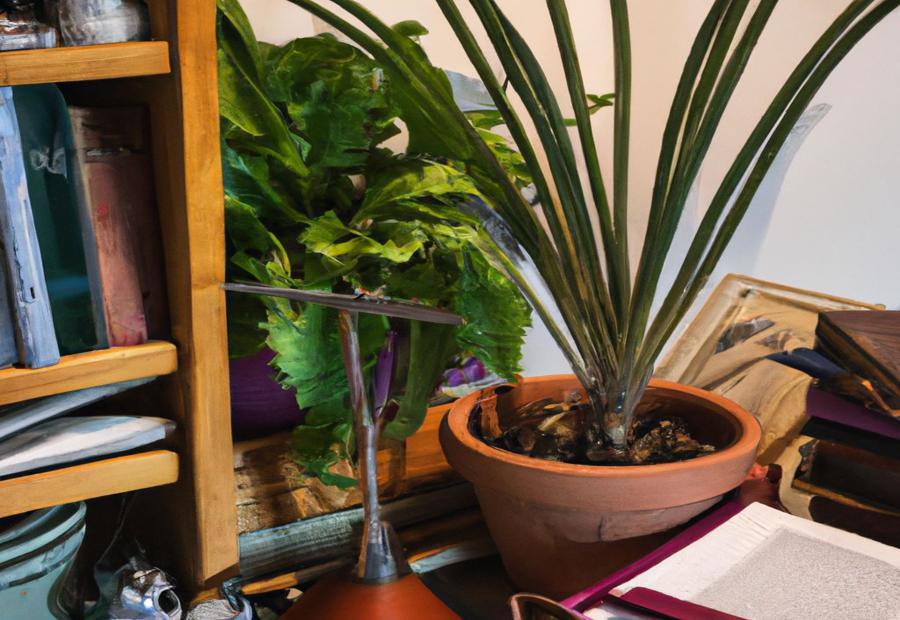
Photo Credits: Gardeninggurus.Org by Richard Rodriguez
Looking to enhance your Dragon Tail Plant care? Discover the best potting mixes, fertilizers, and plant care products, handpicked for enthusiasts like you. Dive into a world of premium resources that will elevate your Dragon Tail Plant’s well-being and growth. Additionally, find online support and guidance for all your inquiries on nurturing and cultivating these beautiful plants. Elevate your Dragon Tail Plant journey with top-notch tools and knowledge.
Introduction to premium potting mixes, fertilizers, and plant care products suitable for the Dragon Tail Plant
Premium potting mixes, fertilizers, and plant care products are a must for the Dragon Tail Plant’s optimal growth and health. These special products, made just for this unique species, provide the nutrients and support it needs to thrive inside and out.
A well-draining potting mix is key. It needs to retain moisture without getting waterlogged. A mix with organic matter like peat moss or compost gives the roots the perfect balance of moisture and air, preventing root rot and proper hydration.
Fertilizers made for foliage plants are best. They have higher levels of nitrogen for lush leaves. Plus, they may have magnesium, iron, and other micronutrients that keep leaves vibrant.
The Dragon Tail Plant also needs special care products. Leaf shine sprays bring out its glossy leaves. Cleaning solutions and insecticidal soaps fight dust and pests without damaging the plant.
In short, premium potting mixes, fertilizers, and plant care products are must-haves to keep the Dragon Tail Plant healthy and beautiful inside and out.
Online resources and support for further guidance on growing and caring for Dragon Tail Plants
The Dragon Tail Plant is gaining popularity among gardeners, so they need online help. There are many platforms to get info, such as forums, websites, social media, botanical gardens, apps, and YouTube videos.
Forums give users a place to share experiences and give tips. Websites and blogs have articles and guides for Dragon Tail Plant care. Social media groups let users ask questions and get advice from experienced growers. Botanical gardens provide information on habitat, growing conditions, and maintenance. Apps and platforms give personalized recommendations. YouTube videos show tutorials and demos. All these resources make it easy to nurture Dragon Tail Plants and connect with other plant lovers.
Conclusion and closing remarks about the Dragon Tail Plant
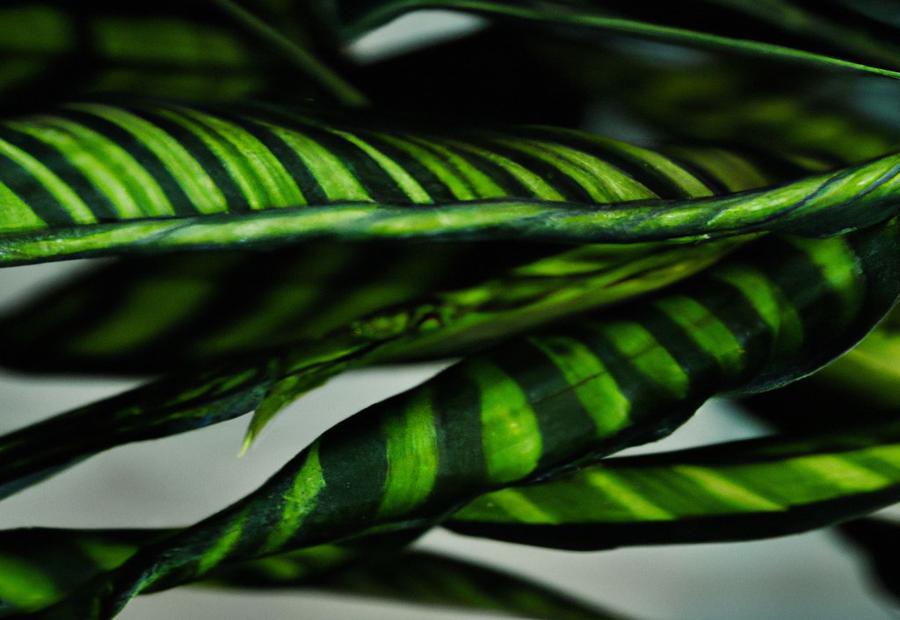
Photo Credits: Gardeninggurus.Org by Ronald Walker
To wrap it up, the Dragon Tail Plant is a remarkable plant. It looks great and has practical benefits. It can adjust easily, purify air, and has cool symbolism. Add it to any room with a garden or just some vegetation. Experienced plant lovers or newbies will be mesmerized by its unique appeal.
Some Facts About The Dragon Tail Plant:
- ✅ The Dragon Tail Plant, also known as Epipremnum pinnatum or Centipede Tongavine, is native to Northern Australia, Malaysia, tropical and southern China, Taiwan, Japan, and Melanesia. (Source: Team Research)
- ✅ The Dragon Tail Plant has glossy, dark-green leaves on top and lighter undersides, and can grow up to 1 ft long when mature. (Source: Team Research)
- ✅ The Dragon Tail Plant thrives in medium to bright, indirect light and prefers warm and humid conditions. (Source: Team Research)
- ✅ The plant can be propagated through stem cuttings, which can be rooted in soil or water. (Source: Team Research)
- ✅ The Dragon Tail Plant is toxic to humans and pets if ingested, as it contains Calcium oxalate. (Source: Team Research)
FAQs about The Dragon Tail Plant
1. What are some alternative names for the Dragon Tail Plant?
The Dragon Tail Plant is also known as the Dragon Plant, Centipede Tongavine, or Dragon Tail Philodendron.
2. How do I position the Dragon Tail Plant for optimal growth?
The Dragon Tail Plant thrives in medium to bright, indirect light. It is best to place the plant in a well-lit room away from direct sunlight.
3. Can the Dragon Tail Plant tolerate low light levels?
The Dragon Tail Plant prefers medium to bright light conditions. While it can tolerate lower light levels, it may elongate and become leggy. Providing brighter light is recommended to prevent this.
4. What is the best soil for the Dragon Tail Plant?
The Dragon Tail Plant prefers well-draining soil. Using a premium potting mix specifically designed for indoor plants, such as Scotts Osmocote Premium Potting Mix, is recommended.
5. How often should I water the Dragon Tail Plant?
Water the Dragon Tail Plant moderately, allowing the top 2-3 inches of soil to dry out between waterings. Avoid overwatering, as it can lead to root rot.
6. Is the Dragon Tail Plant toxic to pets?
Yes, the Dragon Tail Plant is toxic to cats and dogs. It contains Calcium oxalate, which can cause burning and swelling in the mouth and throat, vomiting, diarrhea, and abdominal pains if ingested.


